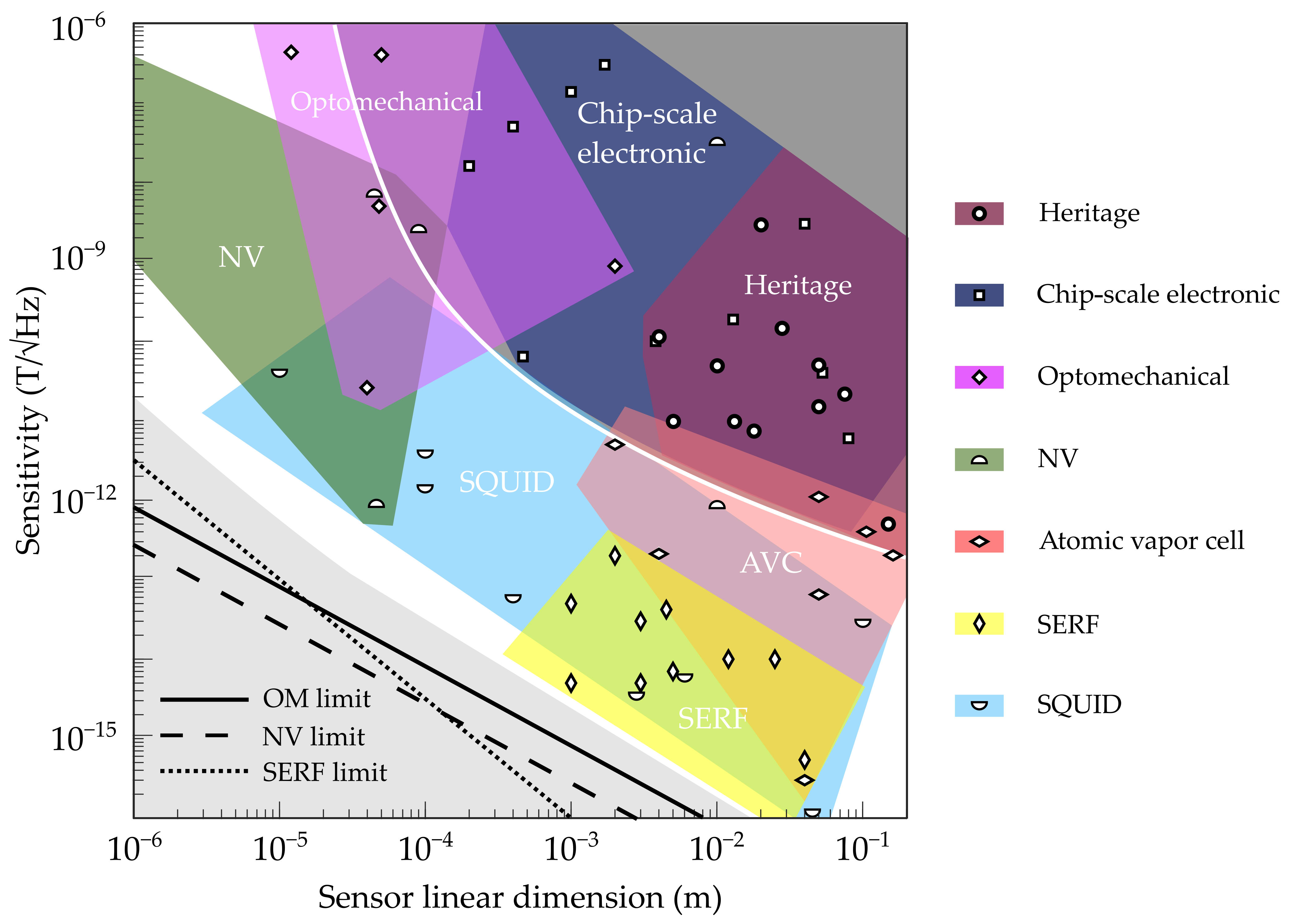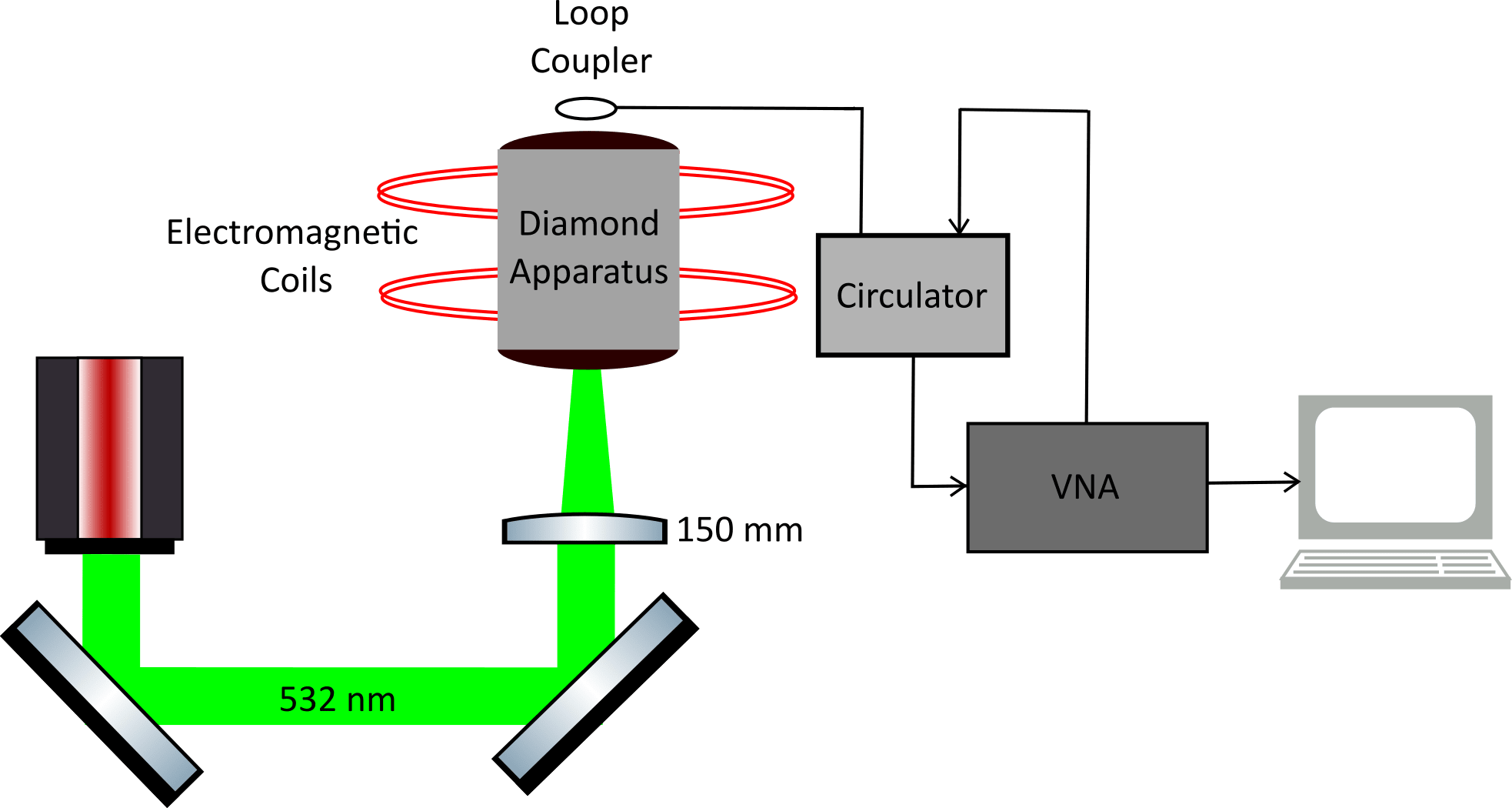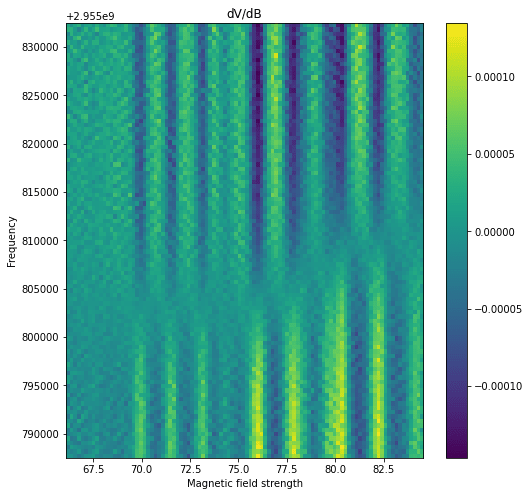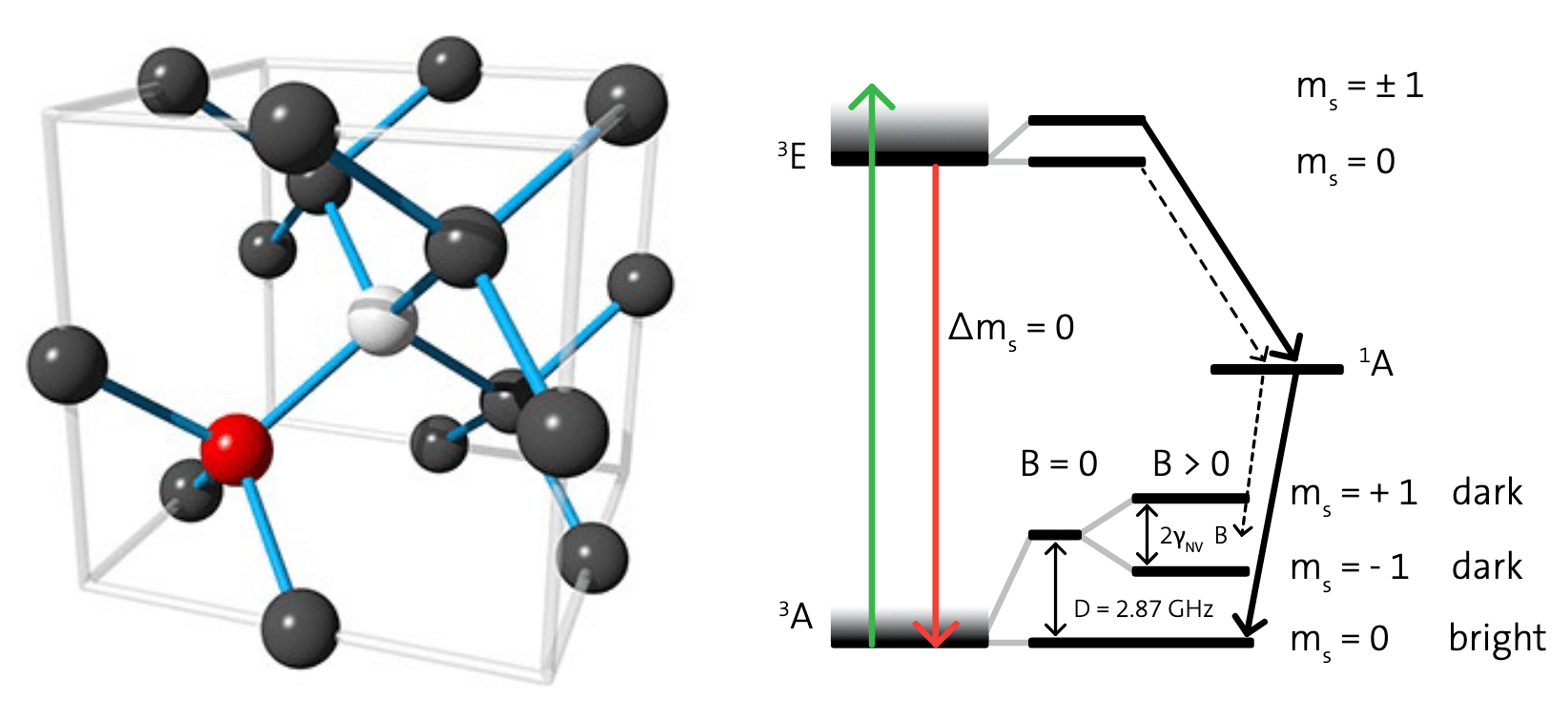Idea: NV⁻ Centers for Brain Interpretability
post by James Camacho (james-camacho) · 2024-02-18T05:28:27.291Z · LW · GW · 1 commentsContents
Introduction NV− Sensors Production Cost (per 1,000 sensors): None 1 comment
Introduction
Human brains are now interpretable, at a rudimentary level. For example, fMRI scans can be reconstructed into images[1] or text[2], and EEGs can be used to play pong[3]. However, these sensors do not have the resolution for fine-grained interpretation. Quantum magnetometers, such as centers, seem like a viable alternative.
First, an overview of current sensors. The main advantages an EEG (electroencephalogram) has is it's cheap and fast. You can buy one for a few hundred dollars, and sample data every few milliseconds. However, the data is pretty bad. Connective tissue (such as the skull) surrounds the brain and distorts the electric field, so the spatial resolution is in the centimeter range.
Magnetic fields are not distorted as much, so an fMRI (functional magnetic resonance imager) has better resolution. However, they only track blood flow to the brain after the neurons fire, which means you can only get a useful image as fast as this response time—once every few seconds. They also weigh several tons and cost several hundred thousand dollars, which makes it expensive to generate a large dataset.
Another group of sensors, MEGs (magnetoencephalograms) solve the resolution problem with quantum sensors, getting to the millimeter and millisecond range. Currently SQUIDs (superconducting quantum interference devices) are most popular, as they can detect magnetic perturbations to . In comparison, a neuron spikes[4] at . However, unless we get better superconductors, they have to be cooled to around , so they end up costing several million dollars and again, weigh tons.
There has been some experimentation with SERFs[5] (spin exchange relaxation free magnetometers) which work at room temperature, but they can't work in external magnetic fields—including the Earth's intrinsic one—so they require a room with magnetic shielding.

On the figure's left are sensors[6], short for nitrogen-vacancy centers in diamond. They operate at room temperature, do not need magnetic shielding, and can potentially get to around [7] sensitivity, though current results are closer to .
Thus, a single sensor could pick up on several hundred neurons firing in sync, and an array could do even better. I think we should build MEGs with sensors, and apply them to brain interpretability.
Sensors
(Introduction to NV centers, adapted from quTools)
To summarize how they operate[8]:
- There are two electrons sitting in the vacancy (white) whose magnetic spins form a triplet ():
- They occupy different orbitals so it doesn't break the Pauli exclusion principle. However, when their spins are parallel, they are "closer", giving them a higher energy. The energy difference is about .
- To force them into the antiparallel state, you can excite the electrons () with a laser and wait for them to decay. At room temperature the Boltzmann distribution gives should end up in the state. Along the way, one electron may decay faster than the other, which is where the singlet state comes in. However, it's not really important for our purposes.
- If you frequency sweep with a VNA, you'll find a dip around , as this frequency gets absorbed to promote
- In the presence of a magnetic field (say, pointing in the direction), will have a slightly lower energy than . This is the Zeeman effect, and will give you two dips in your frequency sweep.
- The location of the dips can be used to calculate the magnetic field.

There's a couple more tricks:
- Most diamonds have more than one center (an ensemble), which can be aligned in four different orientations. There is also nuclear spin coupling[9]. Altogether you may end up with many more dips, which can be used to recover the entire magnetic field:

- To get a stronger signal, you can put the diamond in a cavity that resonates around [10].
- You can replace the laser with an LED if it's bright enough (or close enough) to the diamond.
Production
A lab from Münster University built a magnetometer, with sensitivity [11] by assembling (relatively) cheap parts.
Cost (per 1,000 sensors):
- Diamonds with centers—$150[12],
- Optical adhesive—$30,
- LED—$400[13],
- Photodiode—$500[14],
- longpass filter—$500[15],
- PCB boards—$10,000? Unsure, I don't have a reference frame.
For readout you also need a waveform generator and power supply, which are around $20,000 for laboratory usage. Since you really only need microwaves around , I'm sure you can manufacture this for cheaper.
https://en.wikipedia.org/wiki/Optically_detected_magnetic_resonance ↩︎
https://barosandu.github.io/quNV-Jupyter/T3E3-TEXT-Quantum-Sensing-with-Solid-State-Spins.html ↩︎
https://journals.aps.org/prb/pdf/10.1103/PhysRevB.103.L140102 ↩︎
https://www.mouser.com/ProductDetail/Wurth-Elektronik/150224GS73100?qs=5aG0NVq1C4wrwgedkfhj2Q%3D%3D ↩︎
https://www.lcsc.com/product-detail/Infrared-Receivers_Vishay-Intertech-VEMD1060X01_C144925.html ↩︎
1 comments
Comments sorted by top scores.
comment by Anon9579294728 · 2024-02-18T15:25:31.407Z · LW(p) · GW(p)
I am not remotely qualified to understand whether or not the technical claims about NV centers are correct.
On the margins (given what we understand about neurology today), it is probably true that brain interpretability research will have positive effects. I think these positive effects are second or third order compared to a much scarier first order trend of (a nontrivial amount of probability mass on) vastly negative effects in the longer run.
I think I would be willing to trade away the medical advances we might get from interpretability of small brain circuits in order to shift probability mass away from a future where the state data of a live human brain can be imaged, tinkered with during runtime, stopped, edited, stepped forward in a small loop a million times over with minor perturbations, and analyzed for artifacts. There are almost certainly input signals to the brain that are every bit as weird as “ glitch tokens” just waiting to be found.
Again, far off in the future, but I worry “we need better brain interpretability” elicits the same gut feeling from me as: Scientists have tried for years to create the “horror sprocket,” the first of seventeen important technical breakthroughs depicted in the classic sci-fi novel “Don’t create the torment nexus.” Fortunately, recent advances in sprocket engineering have resolved some of the key real world obstacles!
I’m having a hard time exactly articulating why the term “brain interpretability” terrifies me. I think it is something like this. I believe I am the information processing routine running in my brain, and I believe that a version of the routine implemented on different hardware is still “me,” or at least a “me.” To the extent any value is sacred to me, I think “I am the only entity that should have anything resembling root access to this information processing routine” is one. Anyone will full access to the connectome and set of weights (and whatever other parameters may be needed) has (the ability to obtain, with sufficient intelligence and computing power) root access. Any technology that makes it easier to obtain and understand the weights is, in expectation, horrifying to me.
As a side remark, I thought Richard Ngo’s offhanded mention of interpretability in “Masterpiece” was probably the (at least for me) most upsetting addition to the excellent qntm short story “Don’t create the torment nexus” - https://qntm.org/lena
